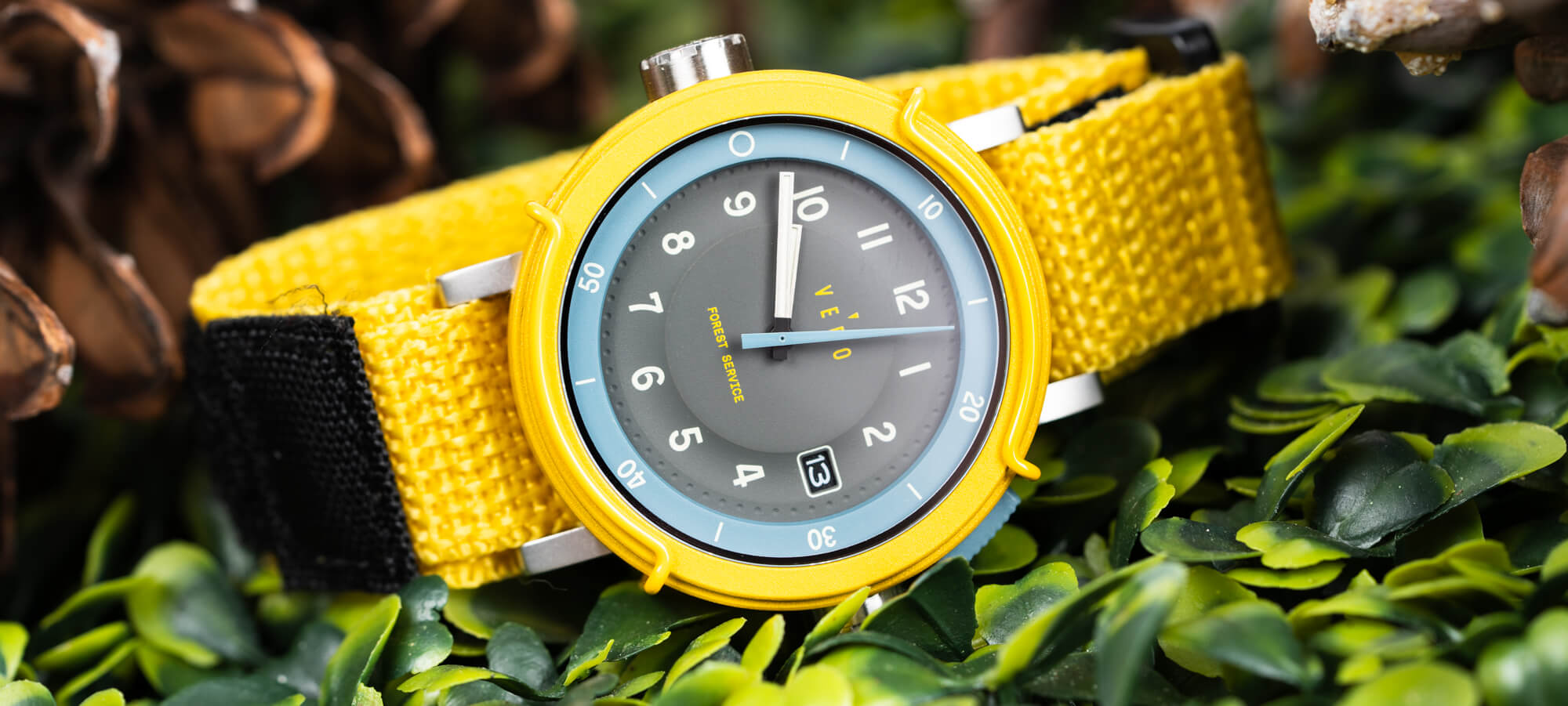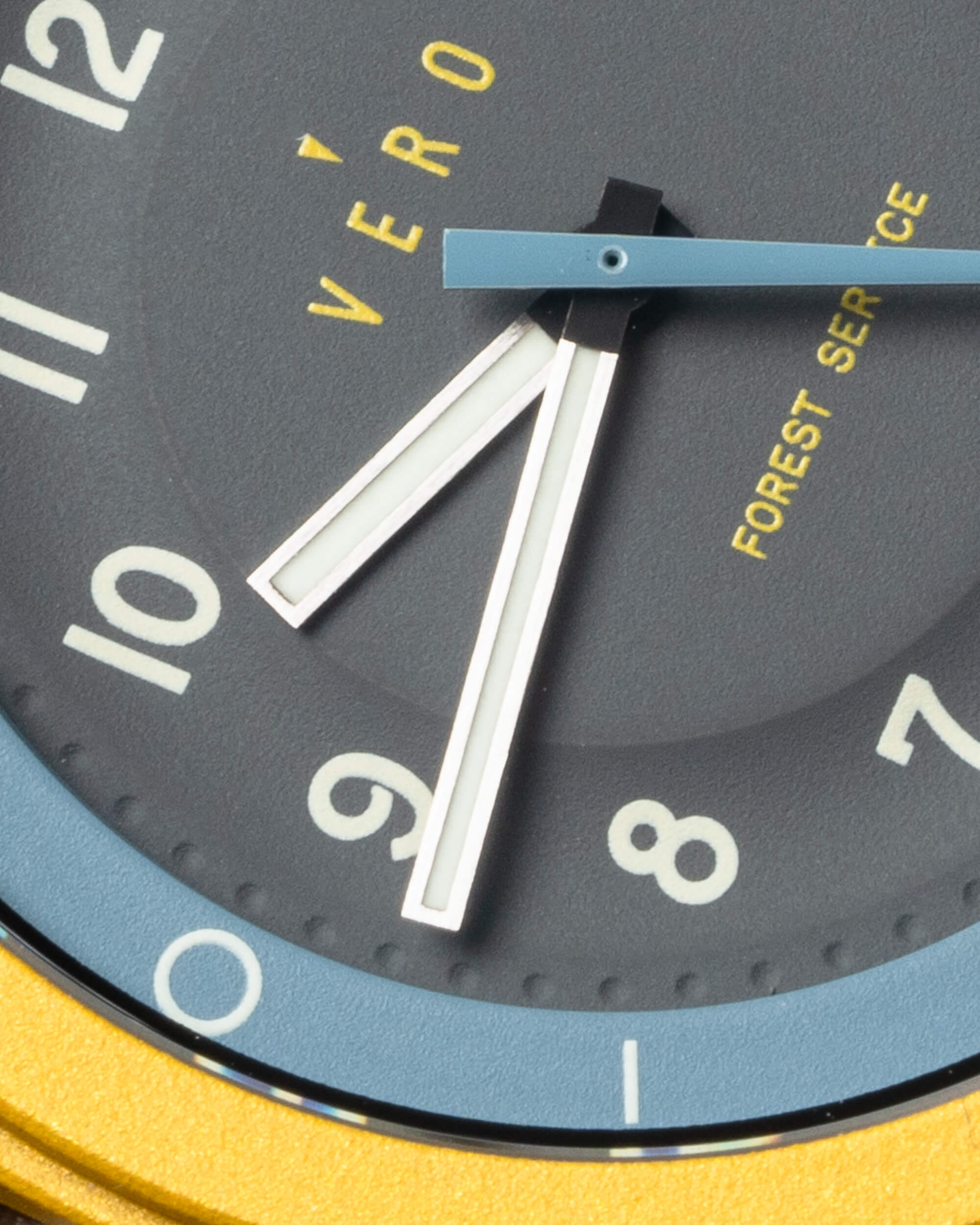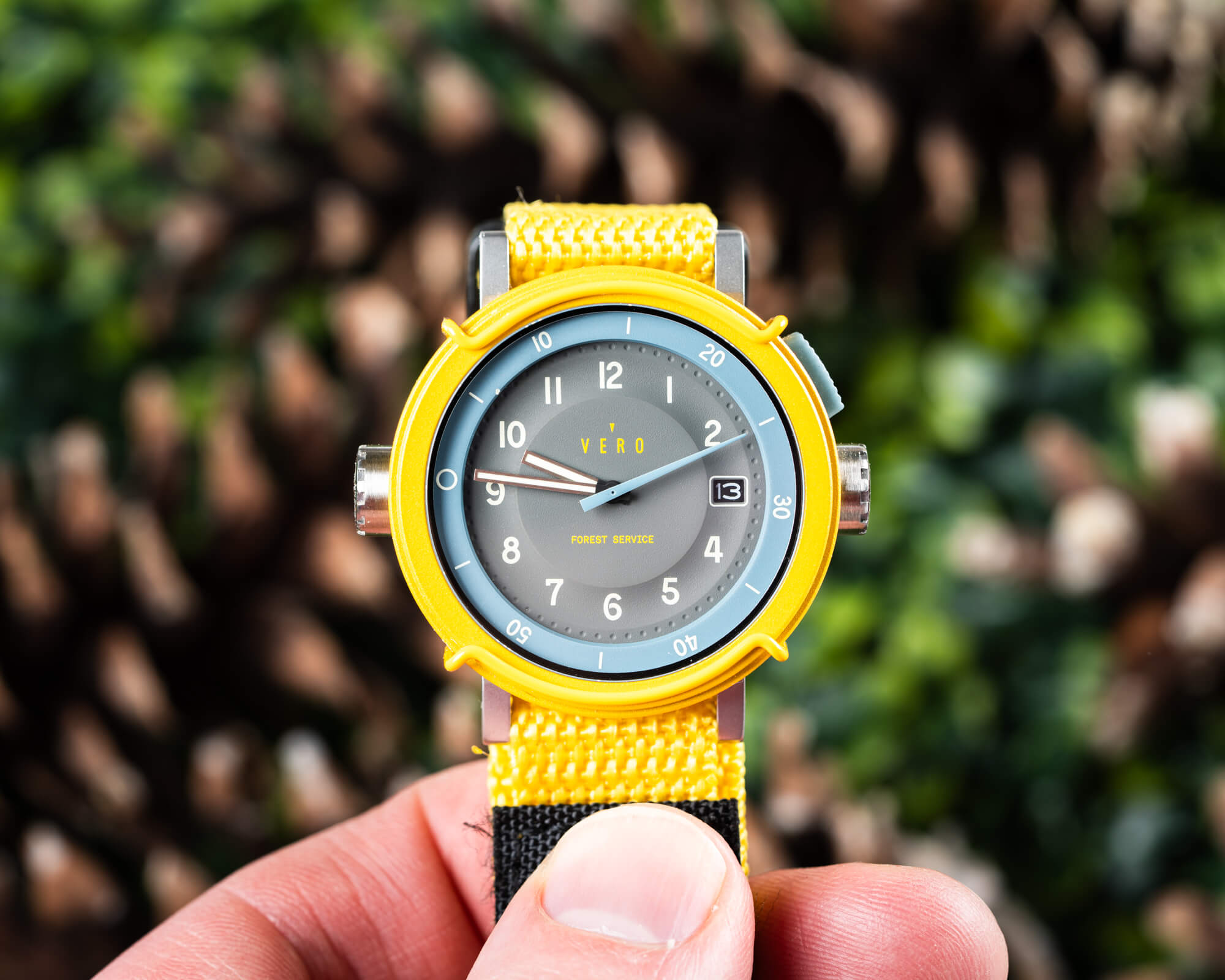
Portland, Oregon-based Vero Watches is known for its tough, good-looking watches that are geared toward those who love the outdoors. They are born of founder Chris Boudreaux’s own love of the natural beauty of the Pacific Northwest. After initially debuting with watches that were almost entirely fabricated in the U.S. — except the movement — with many parts manufactured in-house by Vero. However noble, the realities of that model weren’t sustainable, and the brand made a pivot to outsourcing more components, while still prototyping many parts in-house prior to production. Since that pivot, the brand has delivered some of the more compelling microbrand designs like the Smokey Bear field watches and one of the more rugged analog watches of the last five years, the Vero Workhorse. Building on the look and construction of the Workhorse, the brand’s newest model is the Vero US Forest Service watch, which is being released in four colorways.
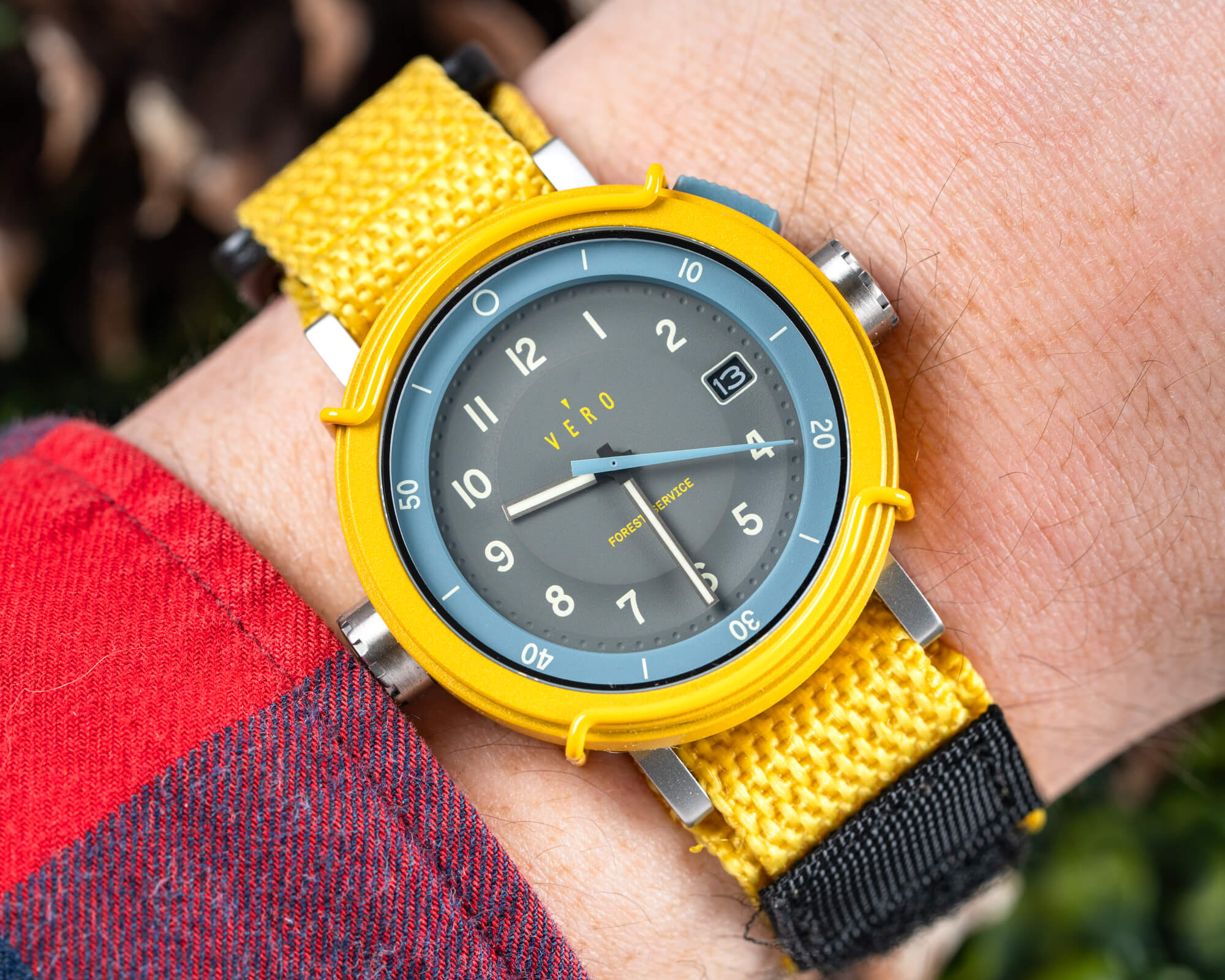
When Vero released the Workhorse two years ago, it came out of nowhere. It didn’t look much like any other watch that had come before it, much less like any Vero watch that had preceded it. It was a hockey puck-looking chronograph, with crowns and pushers on the wrong side and an extra crown at 2 and those bull bars that gave it that ultra-rugged look. It was a watch that was weird but worked, and immediately left you feeling ready to go off-roading into the wilderness. The new Vero US Forest Service is basically the smaller, three-hand version of the watch. It’s available in four different color schemes inspired by the colors used by the U.S. Forest Service: Green from the trucks, the khaki Ranger from the uniforms, the red and gray Airtanker for the firefighting tanker planes, and the yellow Hotshot for the brightly colored uniforms of the renowned Hotshot firefighter crews.

The Vero US Forest Service Edition Hotshot case is made of stainless steel with a scratch-resistant yellow Cerakote ceramic coating that provides a matte texture. The watch measures 39.5mm wide and has a 45.25mm lug-to-lug with a 12.5mm height — and you feel every part of the height. Unlike a typical case construction that has lugs that flow more organically and thus mitigate any case’s dimensions, the uncoated steel lugs shoot straight out from the base of the case, making the watch sit perfectly flat on top of the wrist. The watch is further lifted by the 18mm color-matched nylon strap with a Velcro closure. I would’ve preferred a single-pass or a two-piece strap to avoid the added height, but a NATO strap offers a sense of security, especially on a watch so intentionally designed for getting outdoors.
The case itself and the lugs are one thing, but the adventure really gets underway with all the watch’s protrusions. The rubberized steel bull bars ostensibly add a level of protection; I like their look, but practically, their slightness isn’t giving this watch any more durability. Then you’ve got what I’m calling the PowerPusher, located at 2 o’clock. This button is a unique feature of the Seiko kinetic movement that powers the watch. Push the PowerPusher and the seconds hand swings forward 5, 10, 20, or 30 seconds to show you the watch has 1+ days, 7+ days, 1+ month, or six months of power, respectively. The seconds hand starts moving again once that same number of seconds has elapsed. It’s a cool trick and one that’s rather helpful if you’re picking the watch up and aren’t sure if you need to shake it to give it some extra juice at the start of the day. I did find it weird that, even though you have between 5 and 30 seconds to see what the power reserve is, a second push of the PowerPusher redisplays the reserve, swinging the seconds hand forward once more — this seems rather unnecessary, but is really a quirk of the movement, not the watch (Seiko, not Vero). The watch has a traditional screw-down crown at 3 o’clock, with 120m water resistance and a flat sapphire crystal.

The watch also has a second screwdown crown at 9 o’clock used to adjust the interior bezel, which shares its blue-gray color with the PowerPusher and the seconds hand. In my opinion (which is why you’re here, obviously), it’s the Vero US Forest Service Edition’s Achilles heel. There are two issues. The first is that on the wrist, only lefties will be able to easily use the bezel (a sure win for that 10% of the population). I had to awkwardly reach over the crown and pinch it to unscrew it, set the bezel, and then carefully push it back in and screw it down while bracing the other side with my remaining fingers. The intentionality required is something that isn’t ideal for such a function, and so I didn’t end up using it at all. The other shortcoming here is that the bezel doesn’t have any detents, so getting it to sit exactly where you want (or returning it to 12 o’clock requires and uncommon care and steadiness).
The matte texture and the trio of unexpectedly complementary colors really captured my attention. Beyond the color, though, there are so many tiny details to enjoy about this dial that add to the already engaging case design. A simple rounded date frame, the dimple minute track, the open 9, the circle 0 indicator on the bezel. It’s all very well thought out and cohesive. The dial itself rises up in the center, putting the hands and the color-matched dial text above the peripheral portion, like an idealized tree stump in the middle of a clearing. The lume on this particular model is a bit underwhelming. The hands pop plenty, but the Super-LumiNova on the hour and bezel markings is much dimmer on this particular model. If you head to the brand’s product page for these, they have a day-night slider, and the Hotshot lume seems less impressive compared to the other Vero US Forest Service Edition models.

The watch features a screw-down caseback with the US Forest Service crest engraved. As mentioned above, it’s powered by a Seiko kinetic movement, specifically, the Seiko PX28A. A primer on kinetic movements: Take a quartz movement, add a capacitor instead of a battery, and charge the capacitor with a traditional rotor’s movement. Instead of using light to power the capacitor like a solar movement, it uses the wearer’s movement. Simple enough, and it doesn’t offer a bit more of the soul that some say quartz lacks compared to mechanical. Plus, unlike batteries, capacitors last about 10 years. The movement is accurate to 15 seconds per month and features an end-of-life indicator that sees the seconds hand ticking every two seconds. It has a maximum power reserve of about six months and can get going with a quick back and forth swing, with every 250 swings providing about a day of power. This may seem like a lot, but after getting it going and wearing it for a full day, a quick check with the PowerPusher showed that I already had over a month of power.
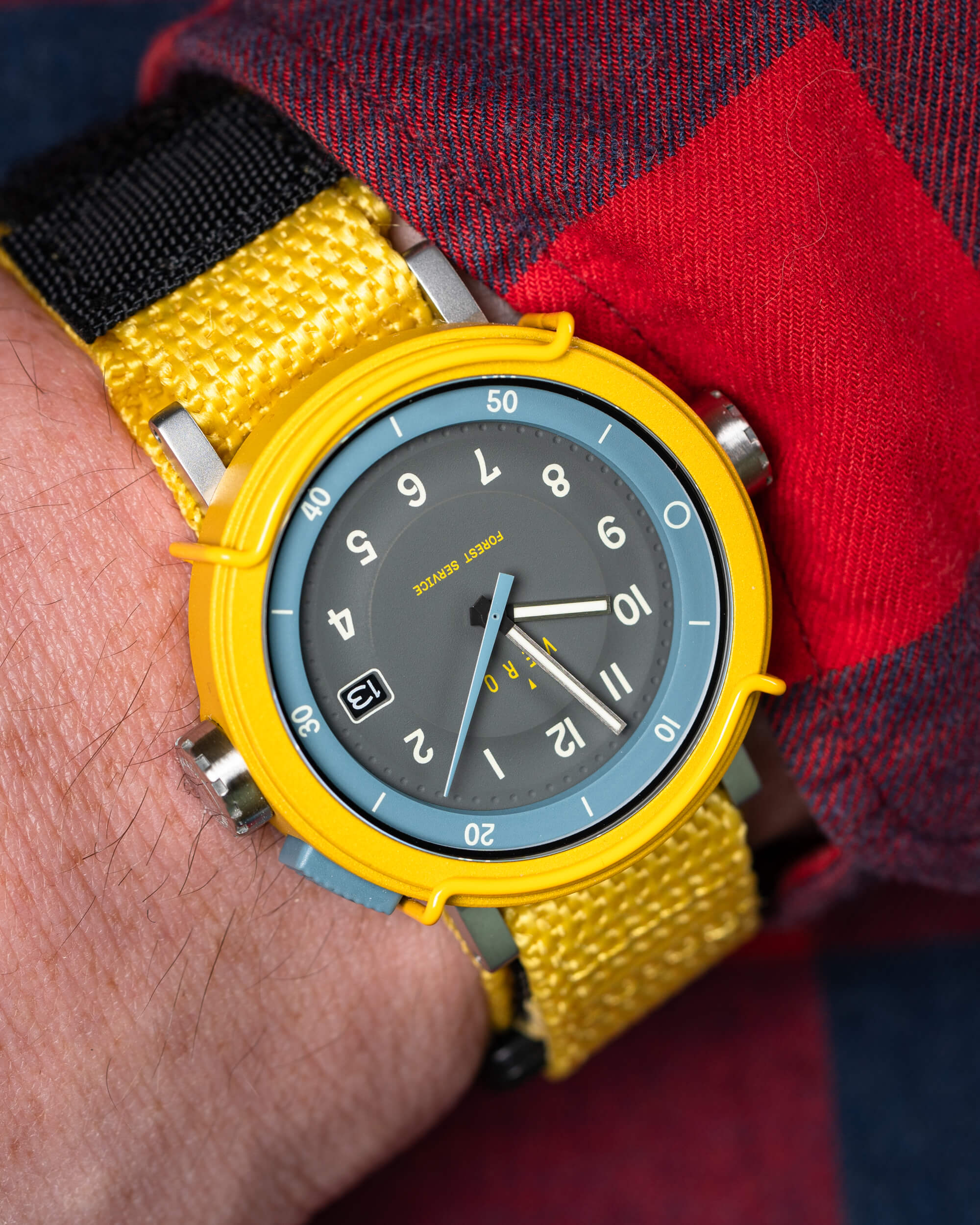
The Vero US Forest Service Edition watch brings the rugged appeal of the Workhorse into a smaller, simplified package. The functionality has some quirks and shortcomings, but ultimately Vero once again delivers a fun watch geared toward those with an active outdoor lifestyle. And it delivers the collection with the same 10-year, no-questions-asked warranty as all its watches (which I can confirm is legit, as I’ve used it for gasket replacement on a years-old Vero SS I picked up secondhand), plus a portion of every sale going to the US Forest Service to help efforts to conserve U.S. forests and grasslands. The Vero US Forest Service Edition is priced at $475 USD. For more information, please visit the Vero website.

